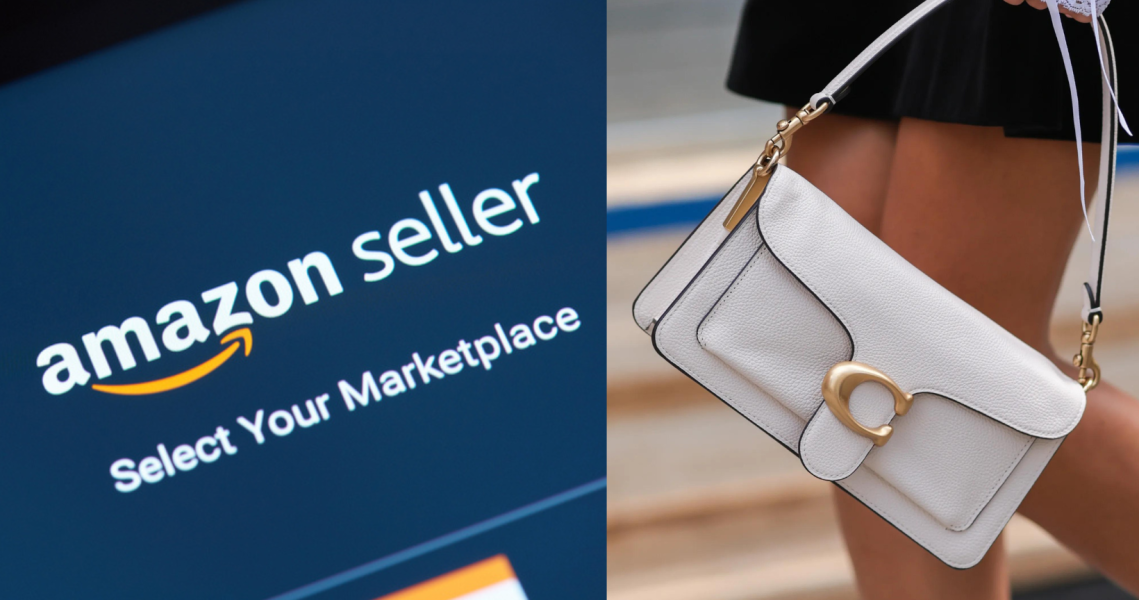On September 29, Coach started selling on Amazon. The company follows Levi Strauss & Co., Gap and Victoria’s Secret & Co., which have all set up shop on the site since 2019.
Like many of the others, Coach has a landing page and a callout on Amazon Fashion’s homepage. In its Amazon store, shoppers can view the products in 3D and move them around. Coach is available for Prime delivery and offers some products in the “try before you buy” Amazon service.
The decision to jump to Amazon may have been motivated by flat sales, as reported on parent company Tapestry’s fourth-quarter earnings call on August 17. Coach saw a 3% year-over-year increase to $1.25 billion. Meanwhile, Tapestry’s other brands saw declines: Kate Spade’s sales dropped 10%, and Stuart Weitzman’s fell 13%. At the moment, Kate Spade only has a homeware shop on Amazon, and Stuart Weitzman is one of the few brands that joined Shein’s marketplace in July. Coach did not comment ahead of this story’s puublication.
“Amazon has an extensive reach, which is why many brands want to sell on the marketplace,” said Neil Saunders, retail analyst at data analytics company GlobalData. “While it may not always be seen as a channel for luxury, many consumers do search for higher-end items on Amazon and are willing to buy big brands from the site.” Amazon reported $134.4 billion in second-quarter sales on August 4. It is reported to have 230 million customers in North America, and over 310 worldwide.
“While Coach has made great strides in improving its own distribution, it still needs third parties to increase reach,” said Saunders, referring to the brand’s shift to DTC. “Traditional channels, like department stores, are waning and becoming less important over time. Amazon will help take the edge of that decline.”
For its part, after only selling beauty items on the marketplace, Victoria’s Secret expanded its Amazon presence in June, adding 4,000 items across its Victoria’s Secret and Pink brands to its storefront. The move marked the first time that Victoria’s Secret offered apparel through a retail partner in North America. Select styles are also offered in Amazon’s “try before you buy” program for Prime members.
At the time, Greg Unis, chief growth officer at Victoria’s Secret, said, “Amazon Fashion remains a natural extension of [the brand’s] owned channels.”
On June 6, Morris Goldfarb, chairman and chief executive officer of G-III Apparel Group, said during the company’s first-quarter earnings call that 20% of the group’s digital growth in the quarter primarily came from Amazon sales. G-III Apparel Group owns Donna Karan and Karl Lagerfeld, among other brands.
“Our focus on developing sales across multiple distribution channels is yielding good results,” Goldfarb said at the time. “In particular, our digital business … outperformed the industry overall. … Our Amazon business was almost triple [that in] last year’s first quarter, [and was] led by outerwear, dresses and shoes.”
Regardless of the monopolization accusations that Amazon is currently facing in the U.S., through the September 26 lawsuit by the Federal Trade Commission (FTC) and 17 state attorneys general, brands still see it as a viable way to get in front of new customers and provide accessible products. According to the complaint, Amazon has harmed competition, raised prices for consumers and hindered innovation.




